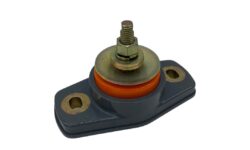Ethyl acetate is a volatile organic chemical that causes smog to form
Workers in industries that use or produce ethyl acetate (ethyl acetate sds) are at risk of exposure. Consumers can be exposed to ethyl acetate through exposure to air from production and processing facilities where ethyl acetate is used. Consumers may also be exposed to ethyl acetate when using consumer products containing ethyl acetate (thinner for paints and enamels, nail preparations, etc.), especially in poor ventilation, and when drinking alcohol.
There is insufficient data to predict the toxicity of ethyl acetate to aquatic organisms, plants, and land animals.
Enter the environment
Industrial emissions of ethyl acetate produce elevated concentrations in the atmosphere around the source. The ethyl acetate that goes into the ground does not evaporate and ends up in groundwater.
Its end
Ethyl acetate, if released as a liquid, evaporates into a gas. Ethyl acetate is a volatile organic chemical that causes smog to form.
Environmental guide
There are no national guidelines.
Industry source
The main source of ethyl acetate is the industry that produces or is used for production. Some industries that manufacture or are used for production include the chemical industry, the pharmaceutical industry, and manufacturers of paints, varnishes and varnishes. These emissions are mainly discharged into the air.
Diffusion sources and industry sources included in diffusion emission data
Other possible emissions of ethyl acetate are commercial and domestic vapors and spills, varnishes and varnishes and their removal, the preparation of films and film plates, the manufacture of artificial leather and silk, and consumer products containing ethyl acetate. Unless a leak occurs, these emissions will be released into the air.
Natural resources
Natural sources of ethyl acetate are wine and naturally fermented products.
Transport source
No resources are moved.
Consumer goods
Some consumer products containing ethyl acetate include automotive and mechanical paints, inks, lubricants, moisturizers, nail polish, enamels and stain removers, paint thinners, pre-moistened towels, resin and rubber adhesives, and artificial fragrances. It’s also found in wine.



